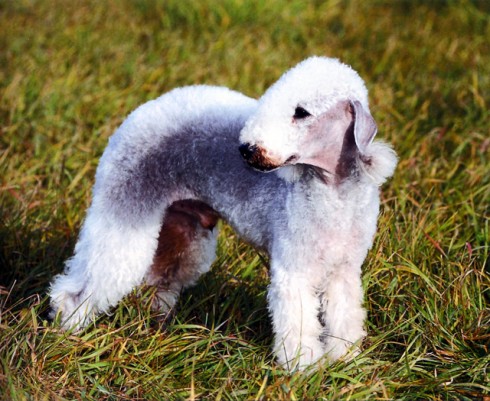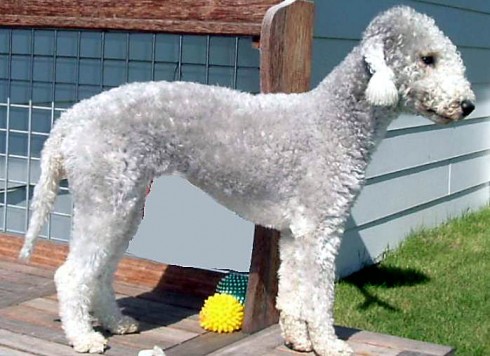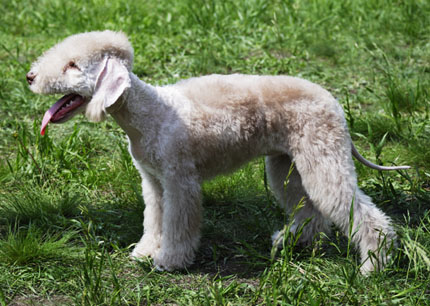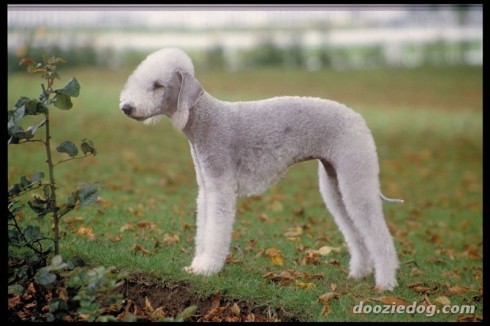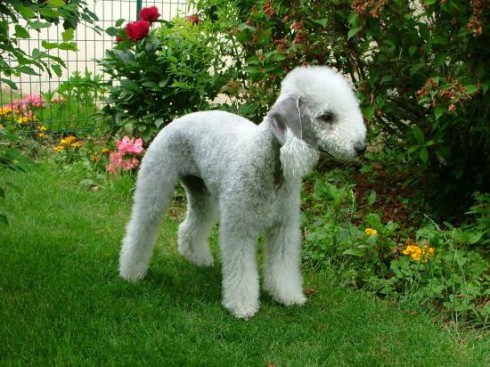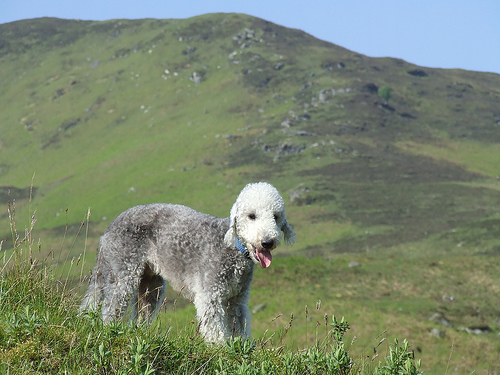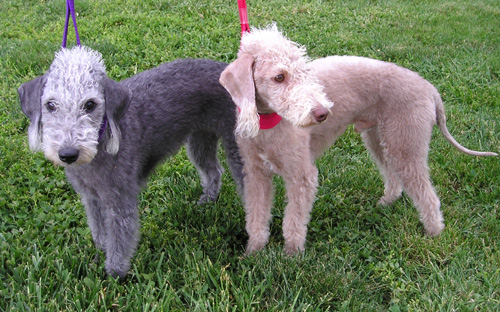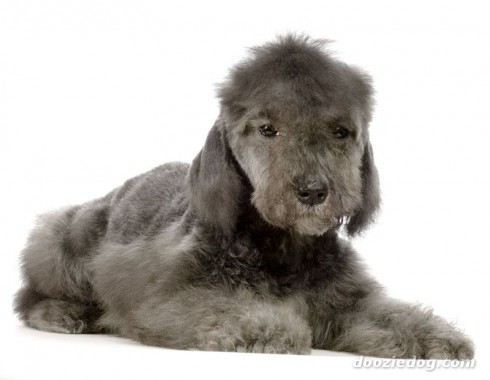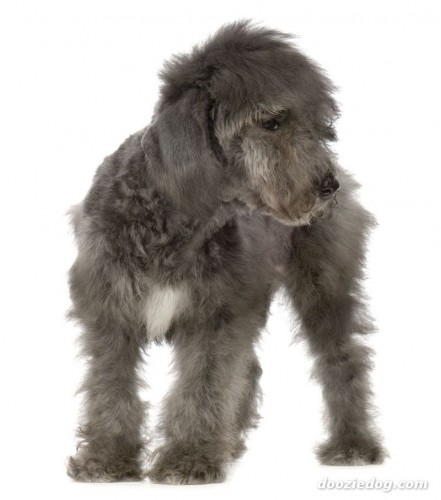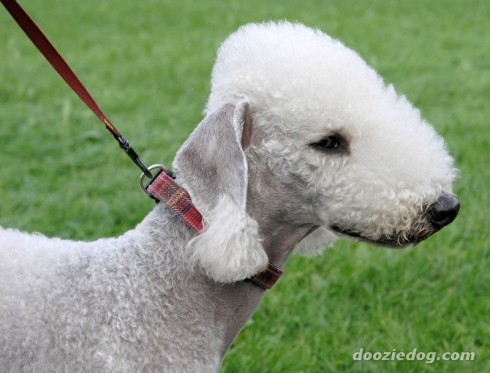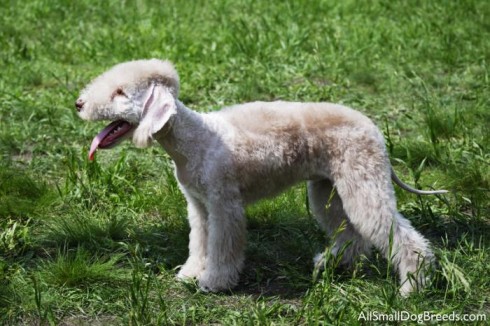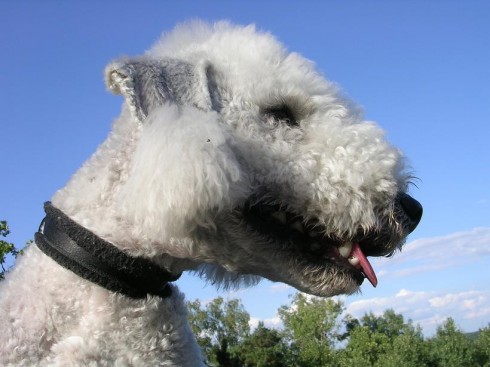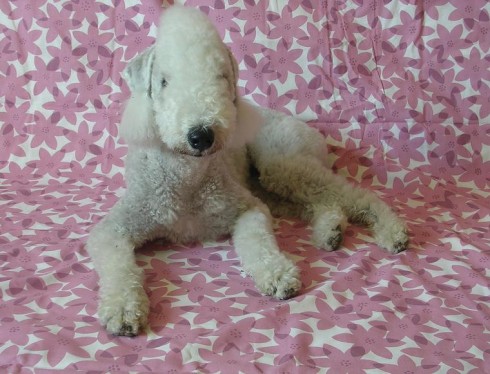Main Index
In Store
Our Web Store
Miniature Schnauzer Picture Gallery
Latest Dog Blogs
- What Are The Basic Commands To Train A Dog?
- PaySafe As The Most Popular Type Of Deposit
- Everything You Need To Know About Pet Sales
- Dogs Contribute To Our Physical And Mental Well Being
- How To Choose Where To Bet On Greyhounds In 2022
- Volunteer With Animals - How To Help Dogs Around The World
- Basic Understanding Of The House Edge
- Why You Should Get A Dog
- Top 20 Popular Dog Names Around The World
- Constipation in Dogs and How to Find Solutions
Bedlington Terrier
Bedlington Terrier Picture Gallery
Bedlington Terrier Clubs/Associations
The Full Bedlington Terrier Description
The most distinctive feature of this gutsy terrier is his curly, woolly coat. He is sometimes described as having the head of a lamb and the heart of a lion. This is a dog that was bred to quickly kill not only rats, but also badgers, otters and foxes.
Did you know?
The Bedlington Terrier was first known as the Rothburg Terrier in the Hannys Hills of England. Joseph Ainsley of Bedlington owned the first dog known to be called a Bedlington Terrier. The breed was originally bred in England for hunting.
So you want to own a Bedlington Terrier?
The Bedlington Terrier is strong, lithe, graceful, and built for speed The Bedlington Terrier's unique appearance combined with his assertive demeanor are two reasons why this dog is described as having "the head of a lamb," and "the heart of a lion." The coat is distinctive in appearance and requires daily five-minute groomings to keep its unique shape and healthy condition. The alert, energetic Bedlington loves to play, but is known for his mild and gentle side. His personality earns him the reputation of a great companion dog.
Indicative Breed Standard
General Appearance
A graceful, lithe, muscular dog, with no signs of either weakness or coarseness. Whole head pear or wedge-shaped, and expression in repose mild and gentle.
Characteristics
Spirited and game, full of confidence. An intelligent companion with strong sporting instincts.
Temperament
Good-tempered, having an affectionate nature, dignified, not shy or nervous. Mild in repose but full of courage when roused.
Head and Skull
Skull narrow, but deep and rounded; covered with profuse silky ‘top-knot’ which should be nearly white. Jaw long and tapering. There must be no ‘stop’, the line from occiput to nose end straight and unbroken. Well filled up beneath eye, close fitting lips, without flew. Nostrils large and well defined.
Eyes
Small, bright and deep set. Ideal eye has appearance of being triangular. Blues a dark eye; blue and tans have lighter eye with amber lights, livers and sandies a light hazel eye.
Ears
Moderately sized, filbert-shaped, set on low, and hanging flat to cheek. Thin and velvety in texture; covered with short fine hair with fringe of whitish silky hair at tip.
Mouth
Teeth large and strong. Scissor bite, i.e. upper teeth closely overlapping lower teeth and set square to the jaws.
Neck
Long and tapering, deep base with no tendency to throatiness. Springs well up from shoulders, and head carried rather high.
Forequarters
Forelegs straight, wider apart at chest than at feet. Pasterns long and slightly sloping without weakness. Shoulders flat and sloping.
Body
Muscular and markedly flexible. Chest deep and fairly broad. Flat ribbed, deep through brisket which reaches to elbow. Back has natural arch over loin creating a definite tuck-up of underline. Body slightly greater in length than height.
Hindquarters
Muscular and moderate length, arched loin with curved topline immediately above loins. Hindlegs have appearance of being longer than forelegs. Hocks strong and well let down, turning neither in nor out. Moderate turn of stifle.
Feet
Long hare feet with thick and well closed up pads. Pads sound and free from cracks or horny excrescences.
Tail
Moderate length, thick at root, tapering to a point and gracefully curved. Set on low, never carried over back.
Gait/Movement
Capable of galloping at high speed and have appearance of being able to do so. Action very distinctive, rather mincing, light and springy in slower paces and slight roll when in full stride.
Coat
Very distinctive. Thick and linty, standing well out from skin, but not wiry. A distinct tendency to twist, particularly on head and face.
Colour
Blue, liver, or sandy with or without tan. Darker pigment to be encouraged. Blues and blue and tans must have black noses; liver and sandies must have brown noses.
Size
Height: about 41 cms (16 ins) at withers. This allows for slight variation below in the case of a bitch and above in the case of a dog. Weight: 8-10 kgs (18-23 lbs).
About Our Article Directory
- Article
- 27 November 2010
- 2 comments
Canis lupus familiaris
- Breed Article
- 29 May 2010
- No comments
Quick Search
Donate
Latest Dog Pods
- Tips on How to Stop Your Dog from Biting
- Beware - Not All Advertised Dog Rescues Really Are! How Can You Know The Truth?
- Helpful Tips For Dog Obedience Problems
- How to Keep Dogs From Eating Poop
- Dog Grooming Tips - A General Overview of the Very Basics of Dog Grooming
- Recognising Different Types of Dog Obedience Problems
- 5 Important Tips On Feeding A Puppy


